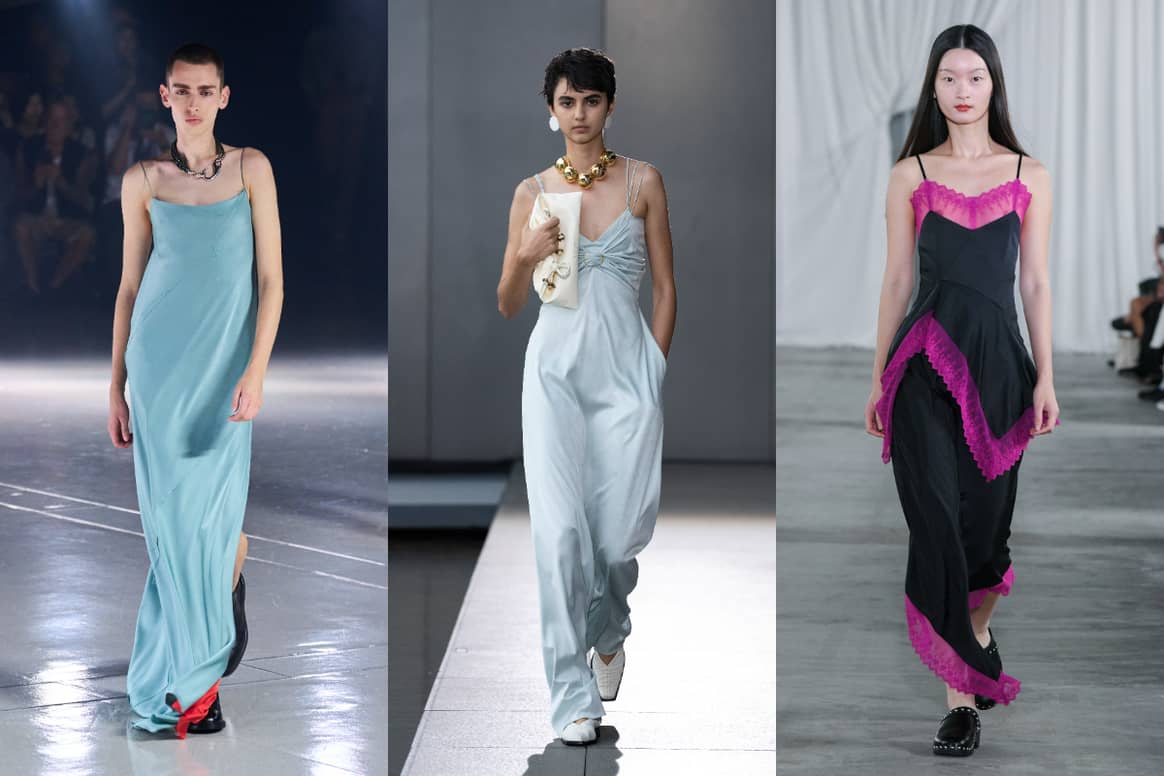Engaged in the clothing industry for 20 years.

Rakuten Fashion Week Tokyo SS24: 5 Trends that dominated the runway
Rakuten Fashion Week Tokyo came to a close over the weekend, rounding out a week-long event that exhibited the collections of around 50 designers. Like years prior, the occasion was marked by its emphasis on localisation, bringing Japanese designers to the forefront of the schedule in order to support the country’s industry. This also allowed viewers an opportunity to glimpse into the trends that are currently, and will continue to, define the market, which is typically characterised by traditional techniques and experimental silhouettes. This remained true for the collections of SS24. FashionUnited has explored five trends that dominated the Tokyo runway for this season.
The casualisation of office attire
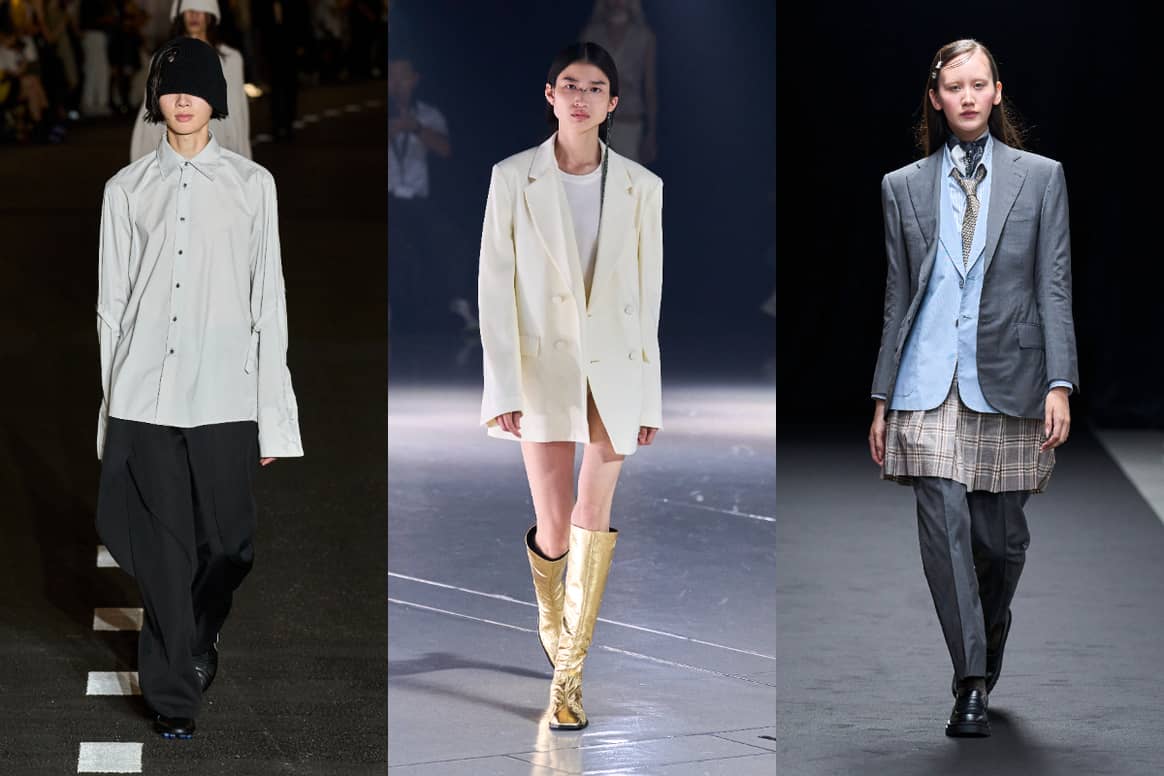
Casual office attire has been a consistent trend at almost every fashion week, however Japanese designers took on the concept in their own unique ways. Layered elements were prominent at Queen&Jack, where blazers were doubled and skirts flared over tailored trousers, yet at Kanako Sakai this casualisation was much more minimal, as long-line blazers sat over simple bodysuits. Others, like Shoop and Nano Art, took to exaggerating the forms of traditional formalwear, through details like elongated cuffs, mismatched collars or knee-length hems. Meanwhile, at El Conductorh, typical office accessories like neckties were used to tie together an entirely casual outfit.
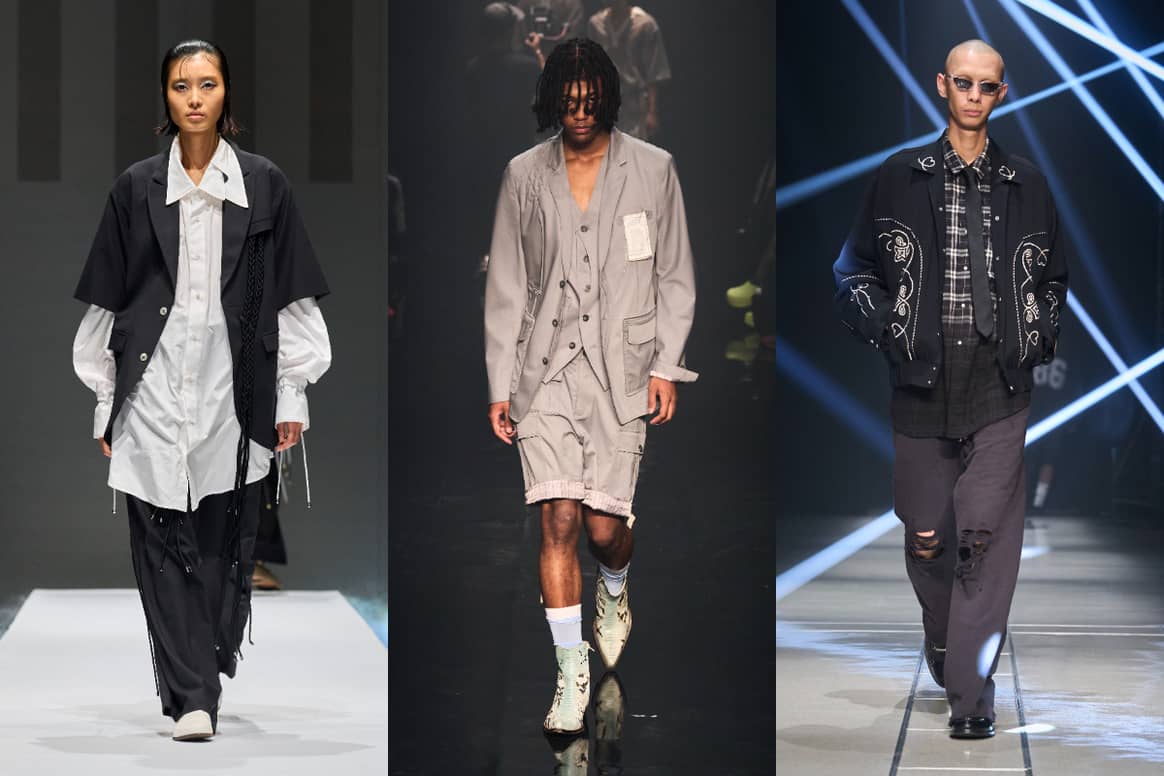
Deconstructed sportswear

Sportswear has always been a mainstay for the runway, as has the idea of deconstruction and experimentation for Japanese fashion. At Tokyo, the two were often combined, as sports staples took on disfigured forms and misshapen silhouettes for the SS24 season. Jogging pants were found with flowing, flared hemlines that dropped to the floor, while polo shirts were elevated with abstract gatherings. Meanwhile, traditional pieces like the cricket sweater or American football jerseys came distressed and embellished, allowing them to also fall into the category of streetwear.
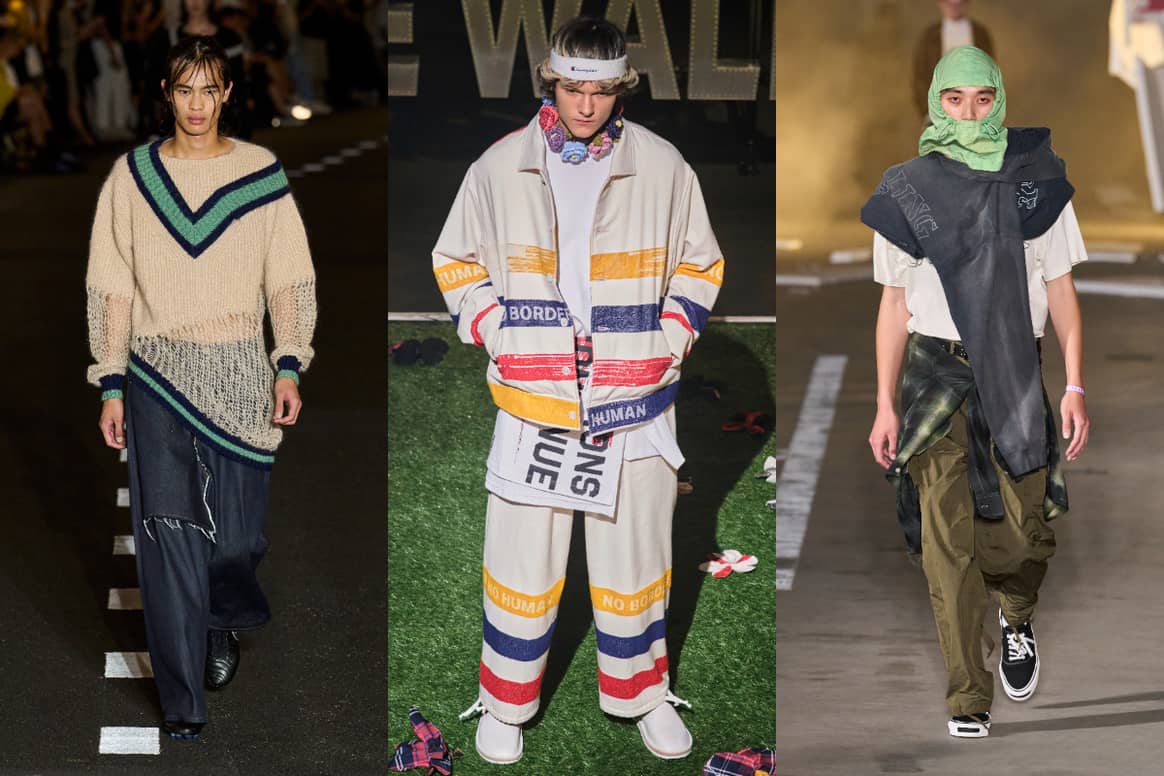
Apocalypse now
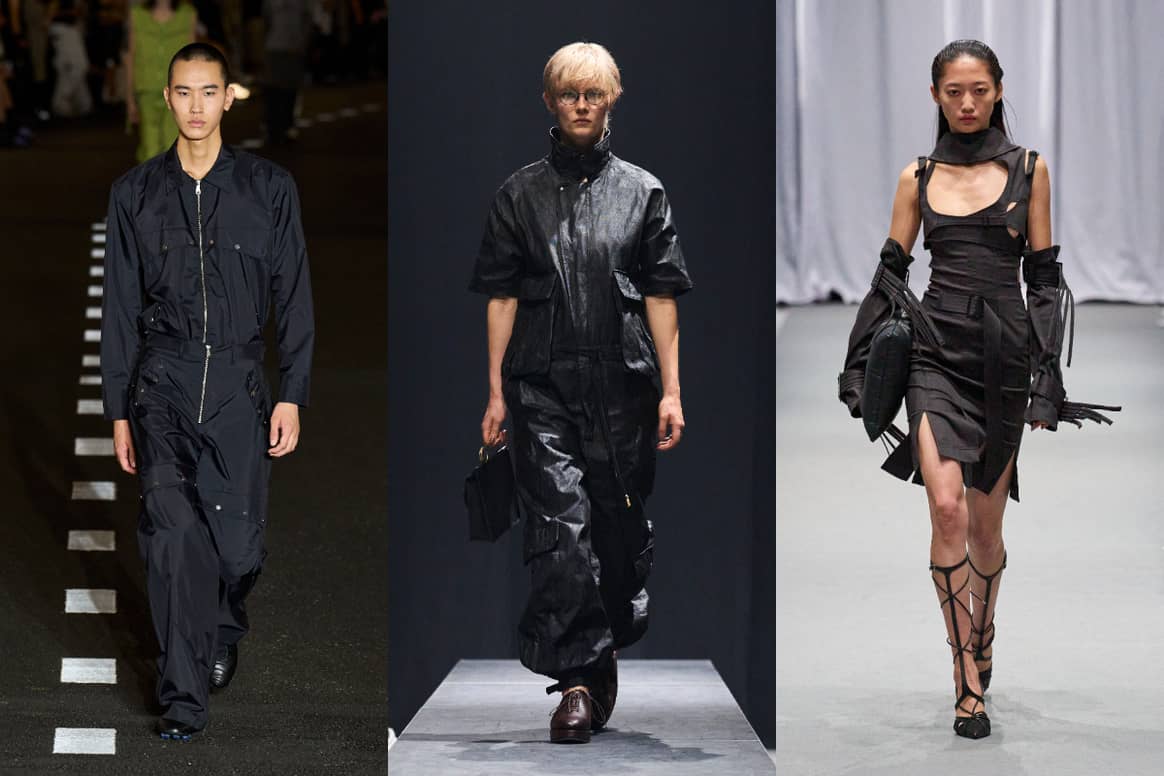
Preparing for an apocalypse has been a running theme throughout the past fashion seasons, with this upcoming period being no exception. In Tokyo, designers clearly had their minds set on the possibility of a dystopian future, evidenced in the prominence of dark colourways and garments that appeared to be highly reconstructed. Utility boiler suits and cargo pants were seen alongside remodelled knits and outerwear, resulting in looks that resembled ones sported by end day survivors and wasteland scavengers, yet with a high-end, refined take. This was particularly true for pieces at Seivson, where formalwear adopted a disfigured approach.
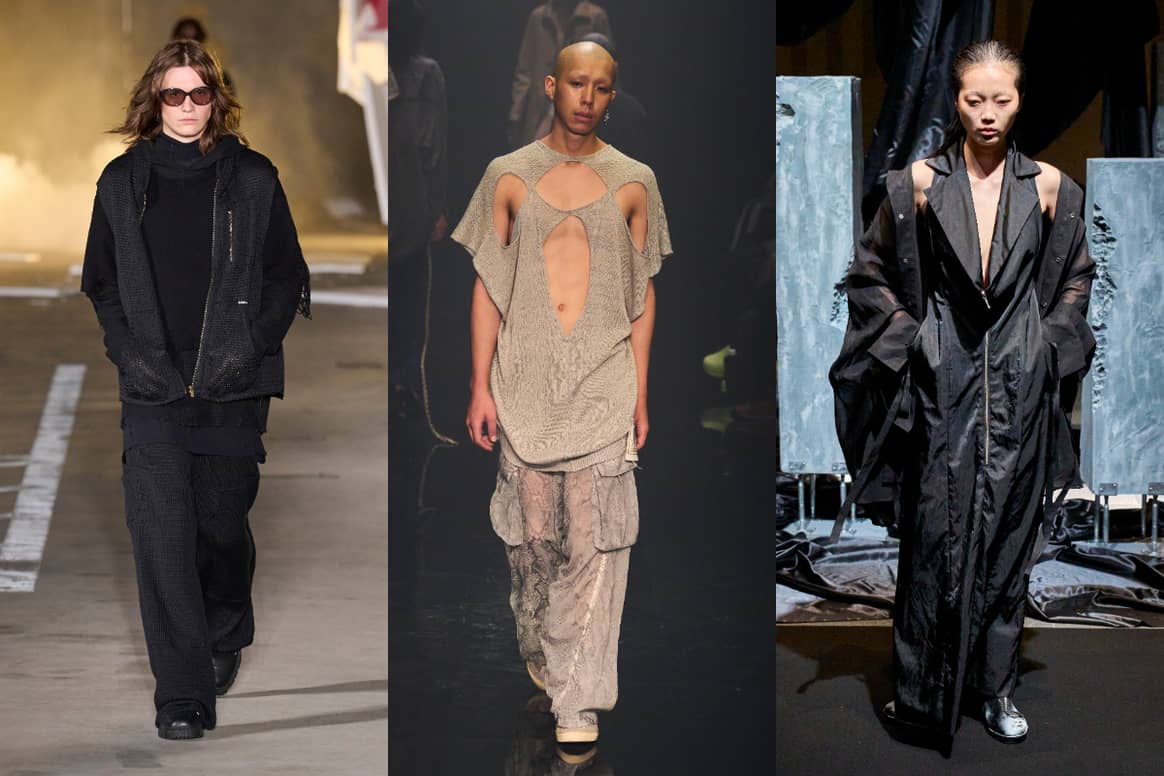
Bubbling silhouettes

If there was one silhouette among the Tokyo collections that stood above them all, it was that of the bubbling kind. From tops to dresses to outwear, designers favoured the overflowing shape of the bubble, applying an array of techniques to achieve the puffed up look so desired. Harunobumurata led the way with this trend, offering up a number of pieces that took on this exaggerated form, with both dresses and tops found in the bubble hemline. Meanwhile, Murral applied the look to sports attire, as windbreakers flounced down the runway with inflated sleeves and flowing materials.
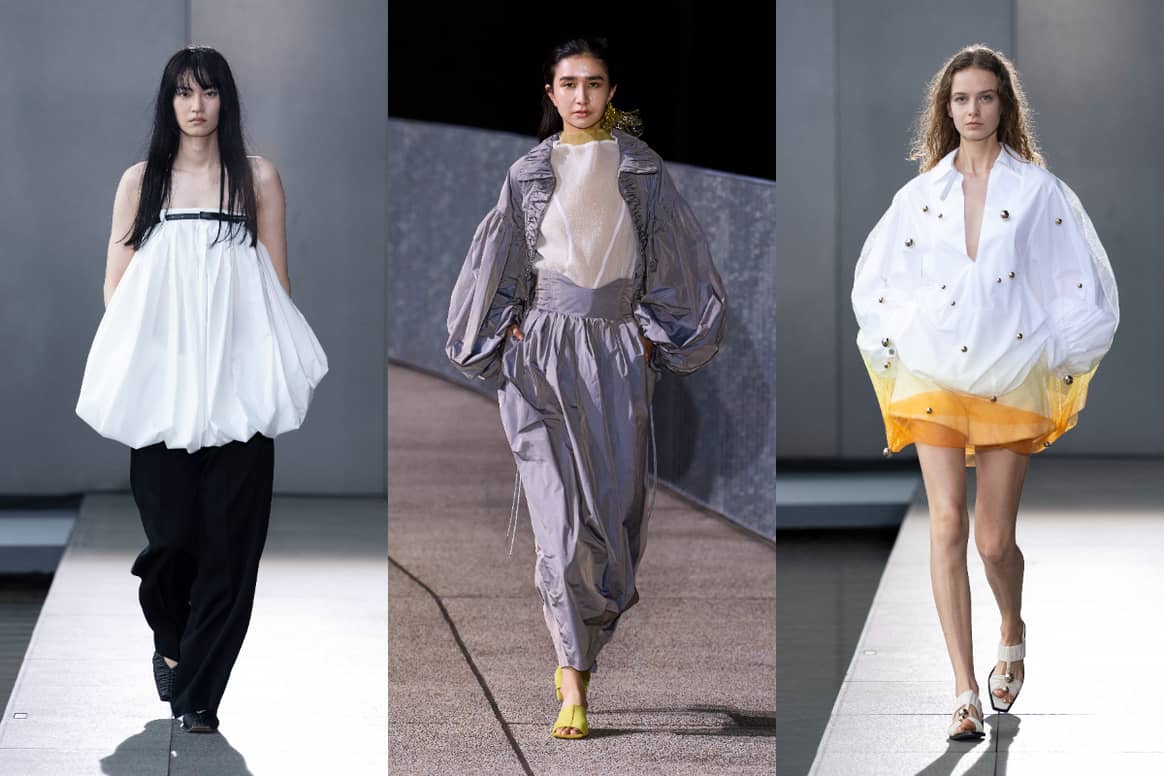
Unapologetic femininity

Amid the displays of bold sportswear and exaggerated shapes, the concept of femininity was still clearly dominant among many collections. Here, the cami dress reigned supreme, taking centre stage on the runway as the dress shape of choice for the season. Pastel blues and lightweight fabrics offered a stark contrast to the sharper pieces mentioned prior, with the addition of gauzy lace and minimalist accessories only emphasising the delicate nature of this trend. For others, femininity came in the form of flowing chiffon and boho-like skirts, each sweeping the floor in a similarly graceful fashion.
